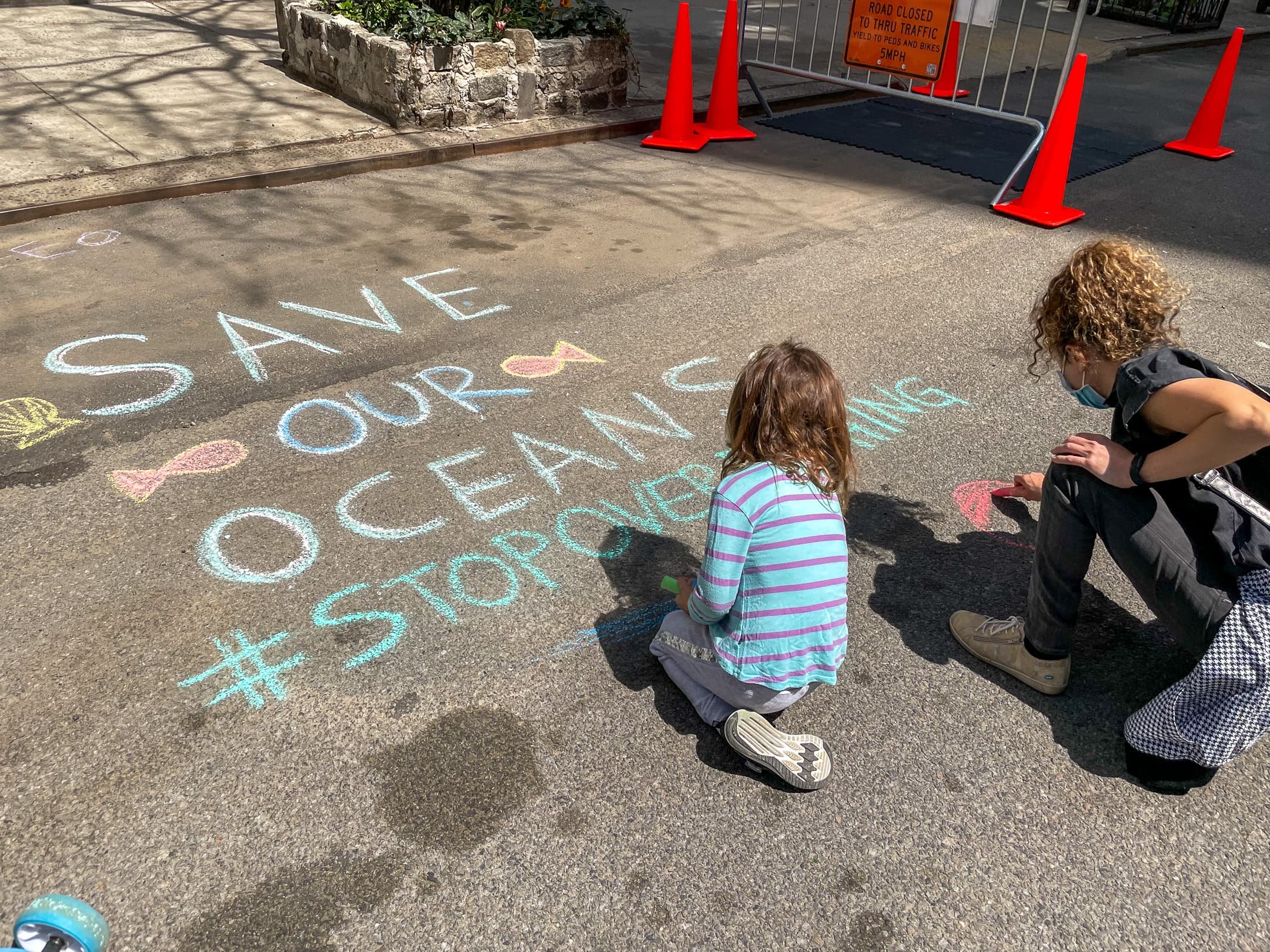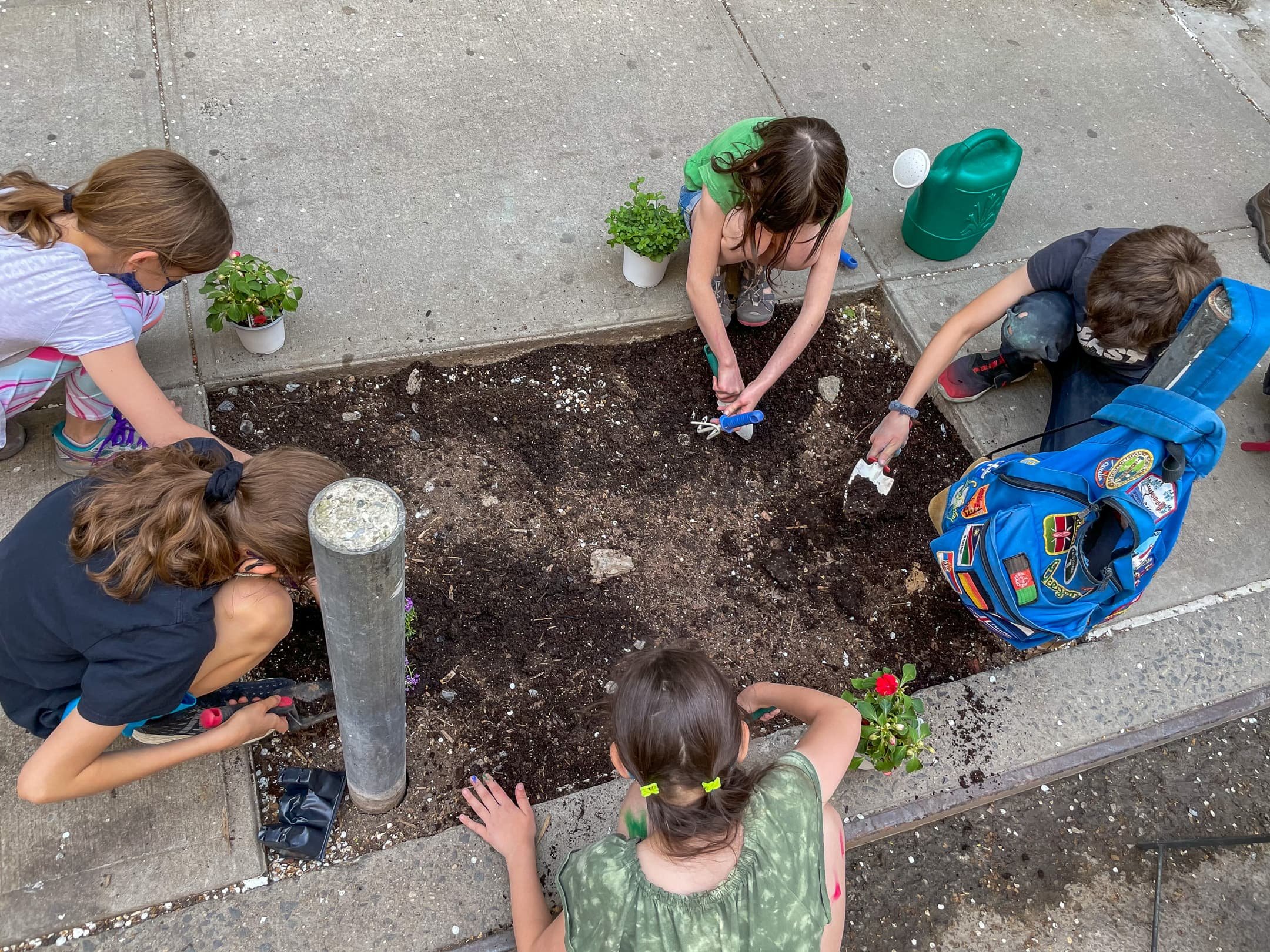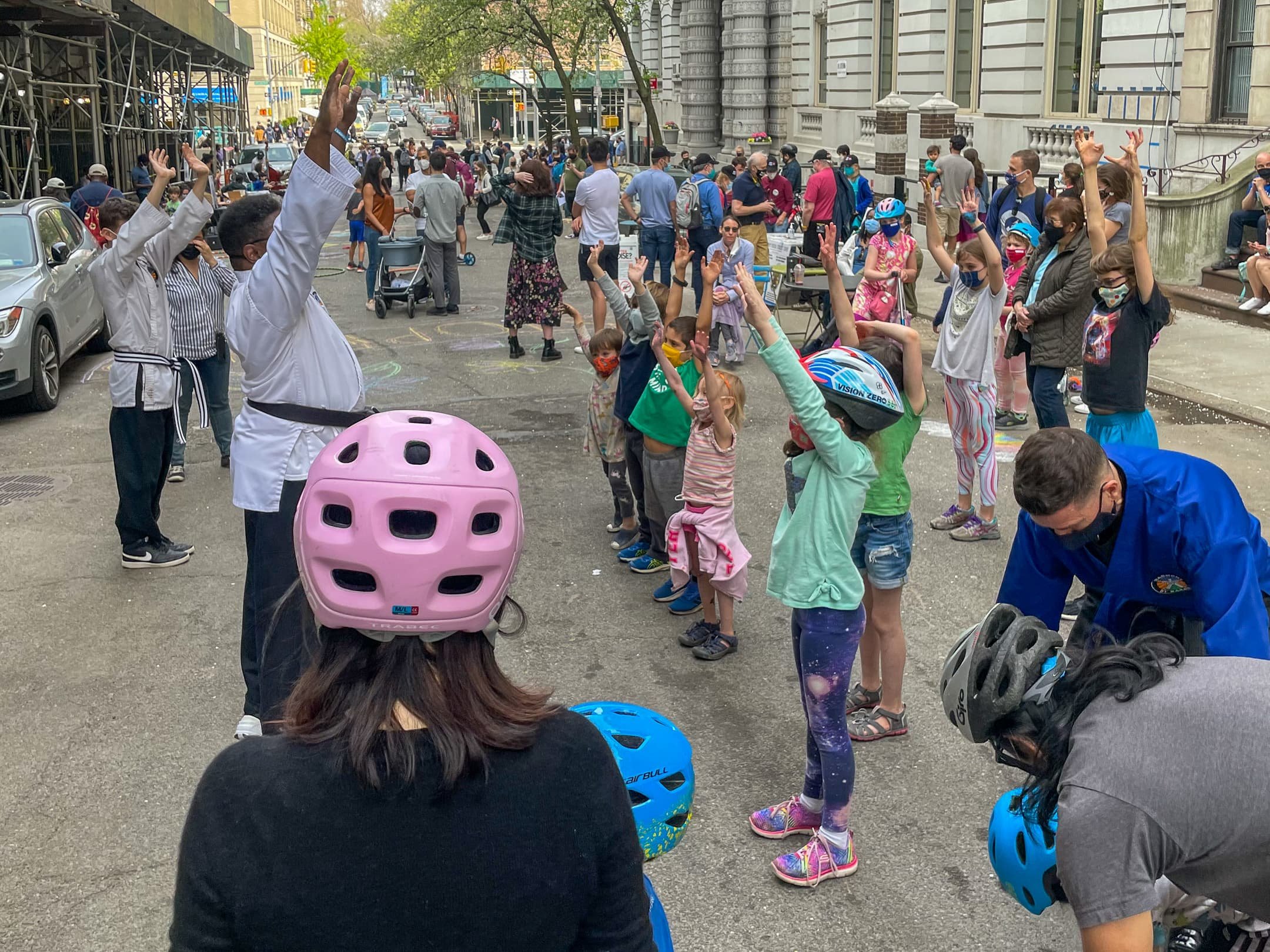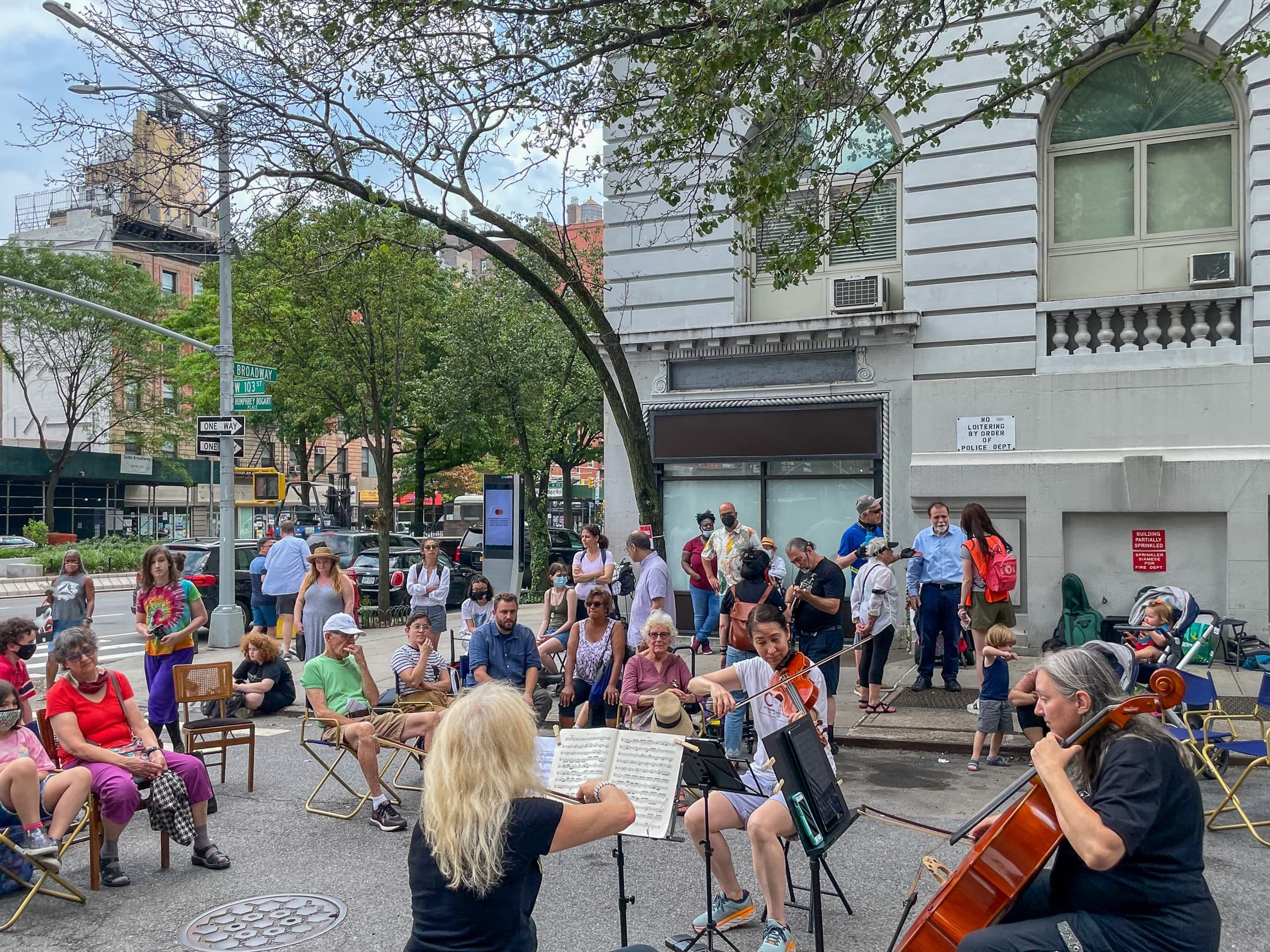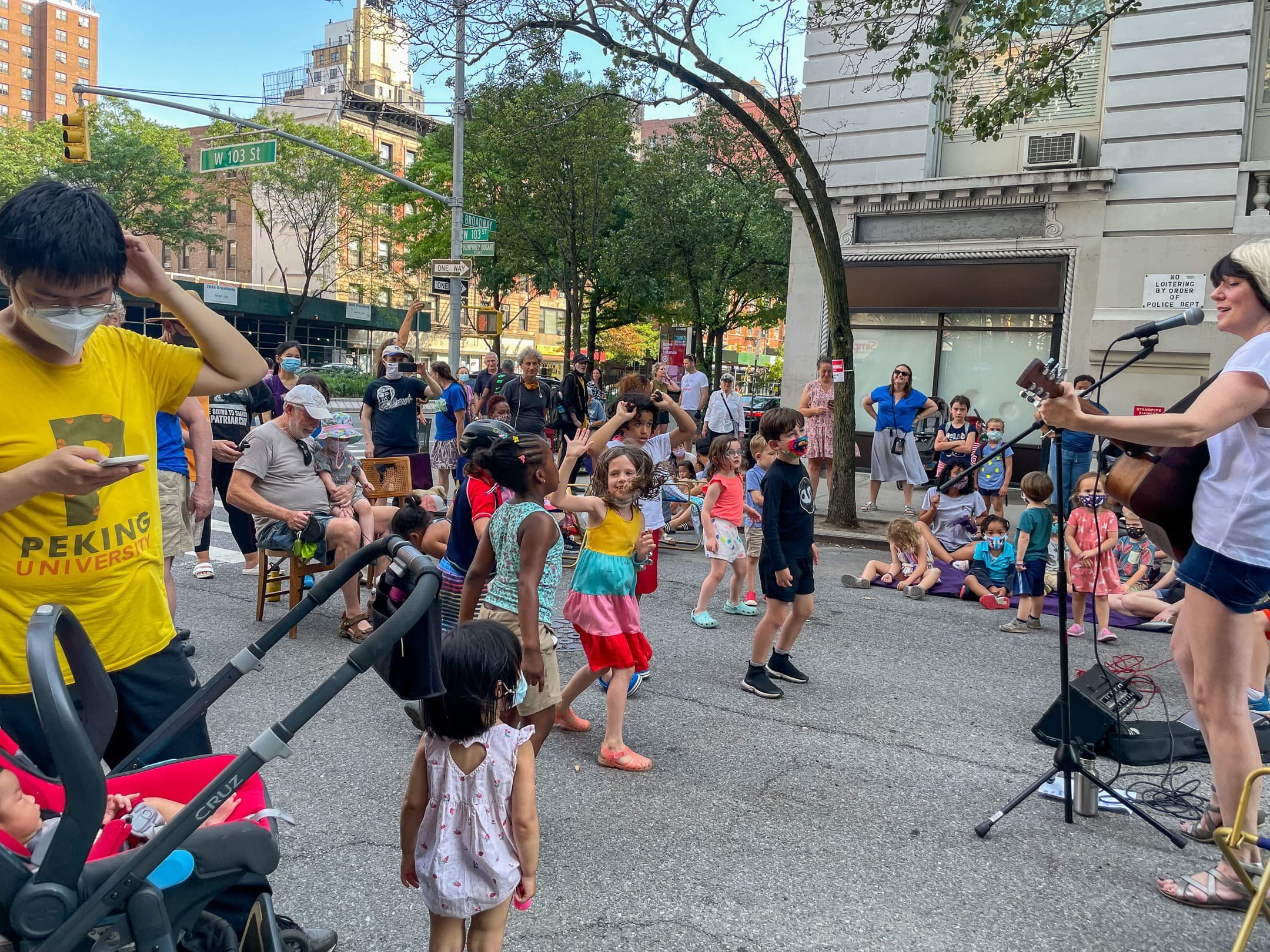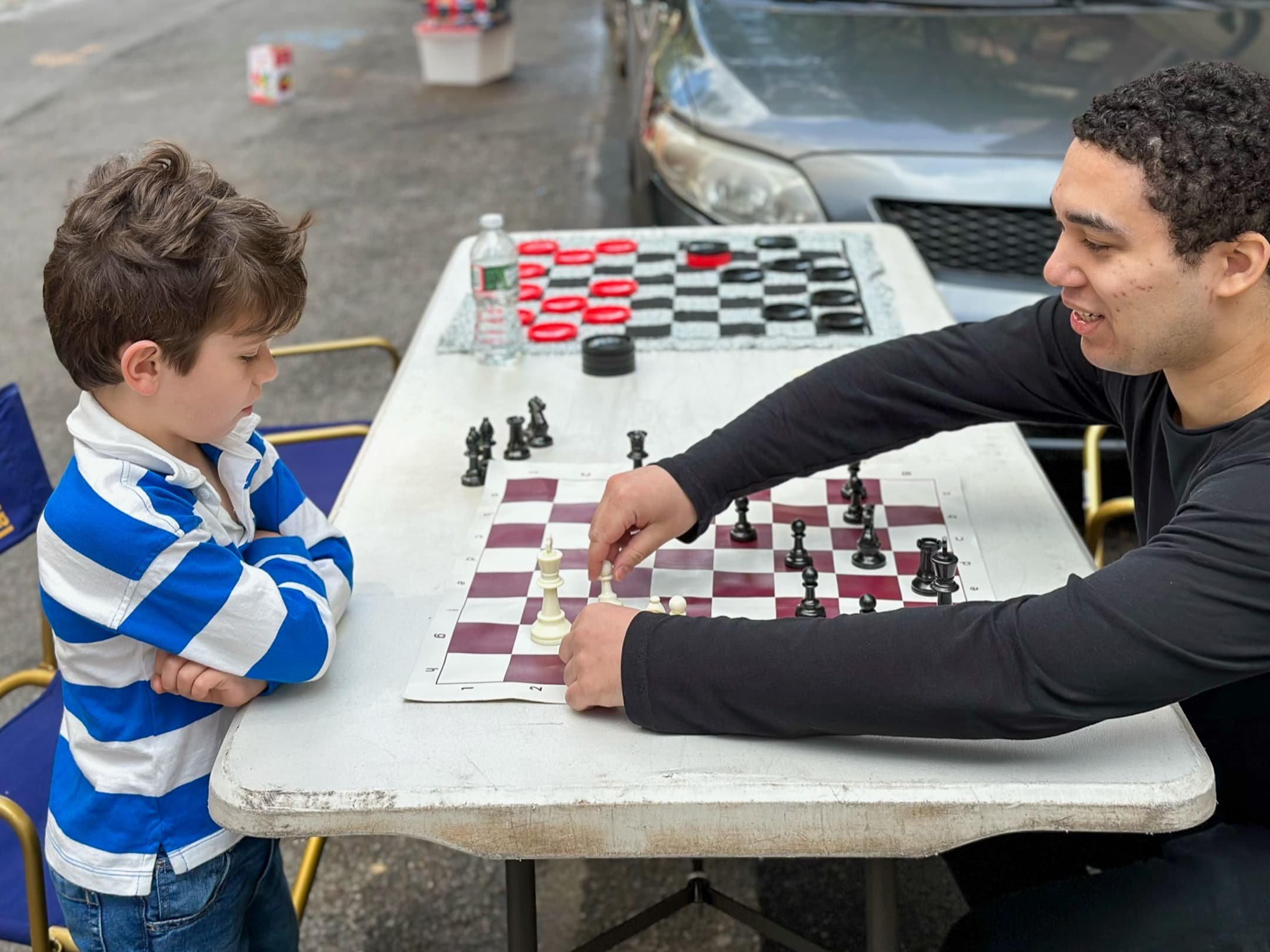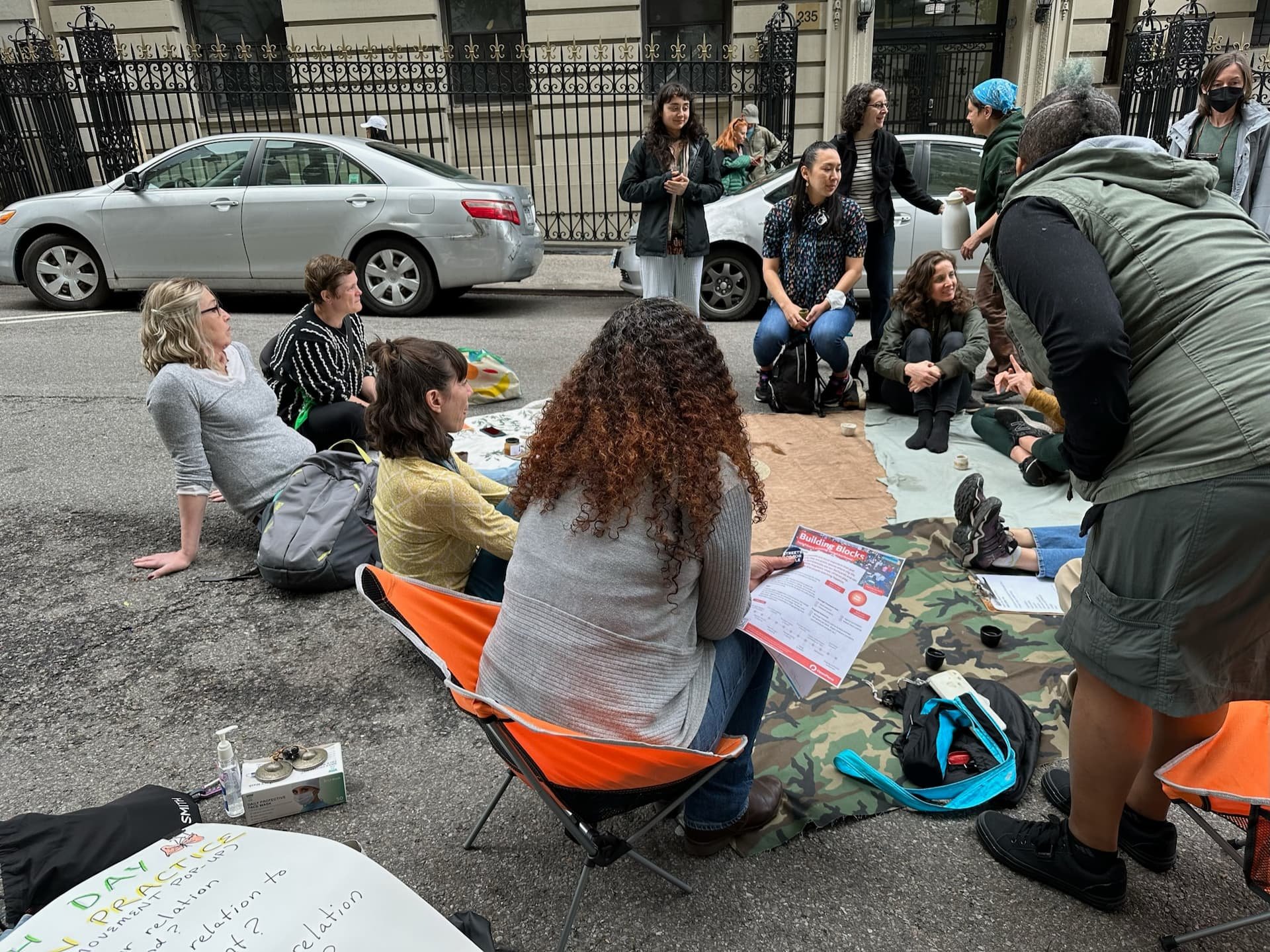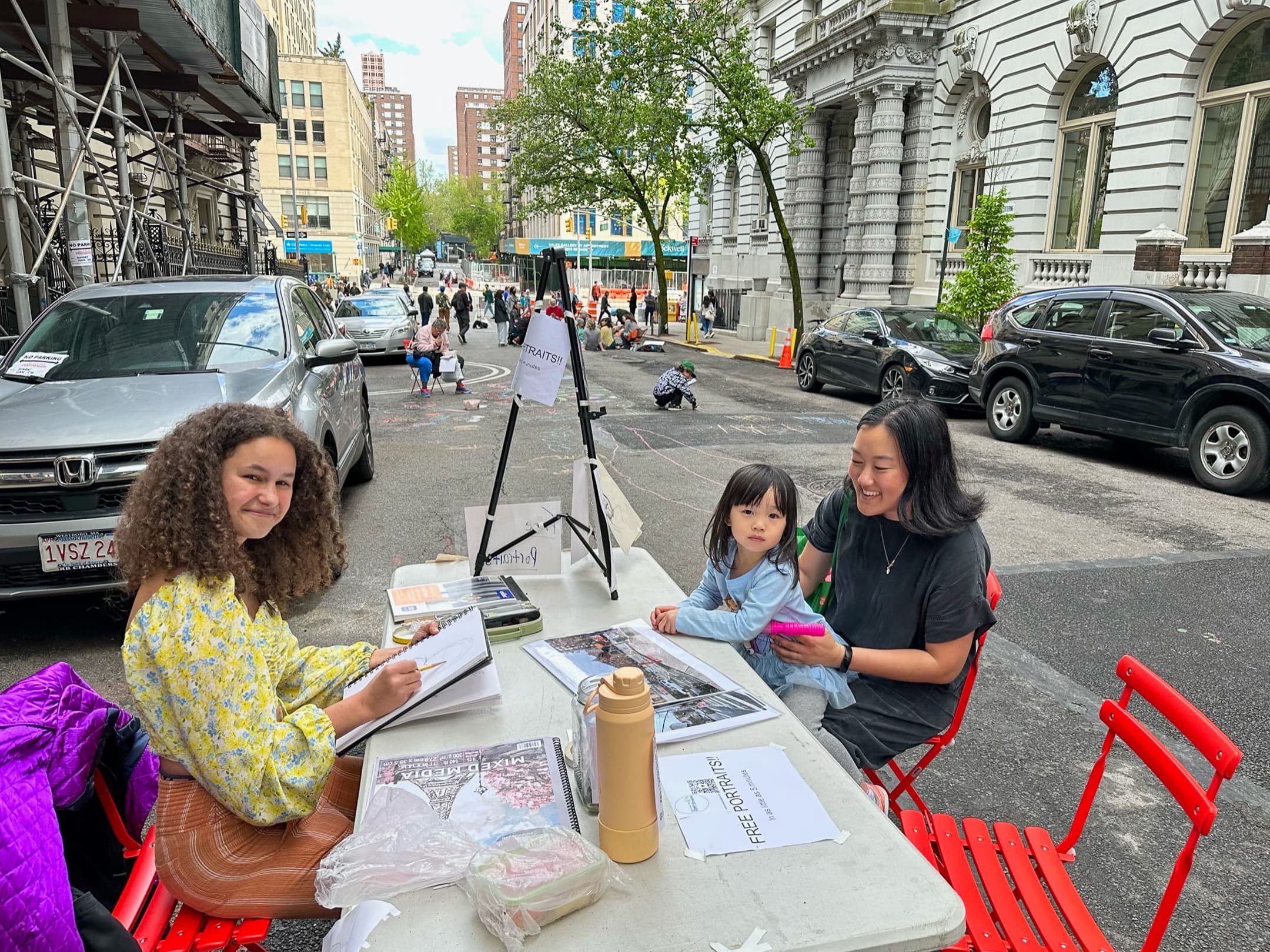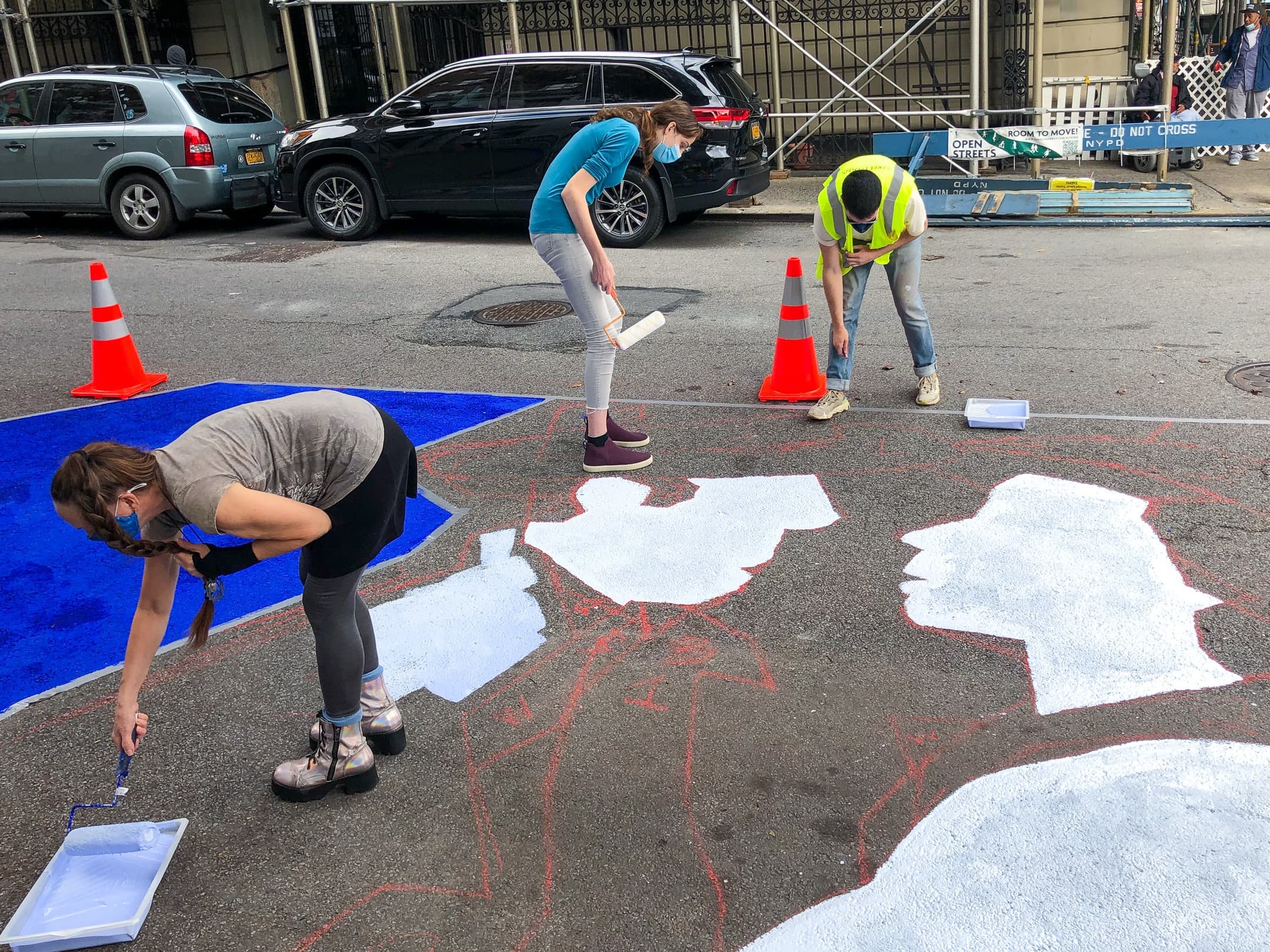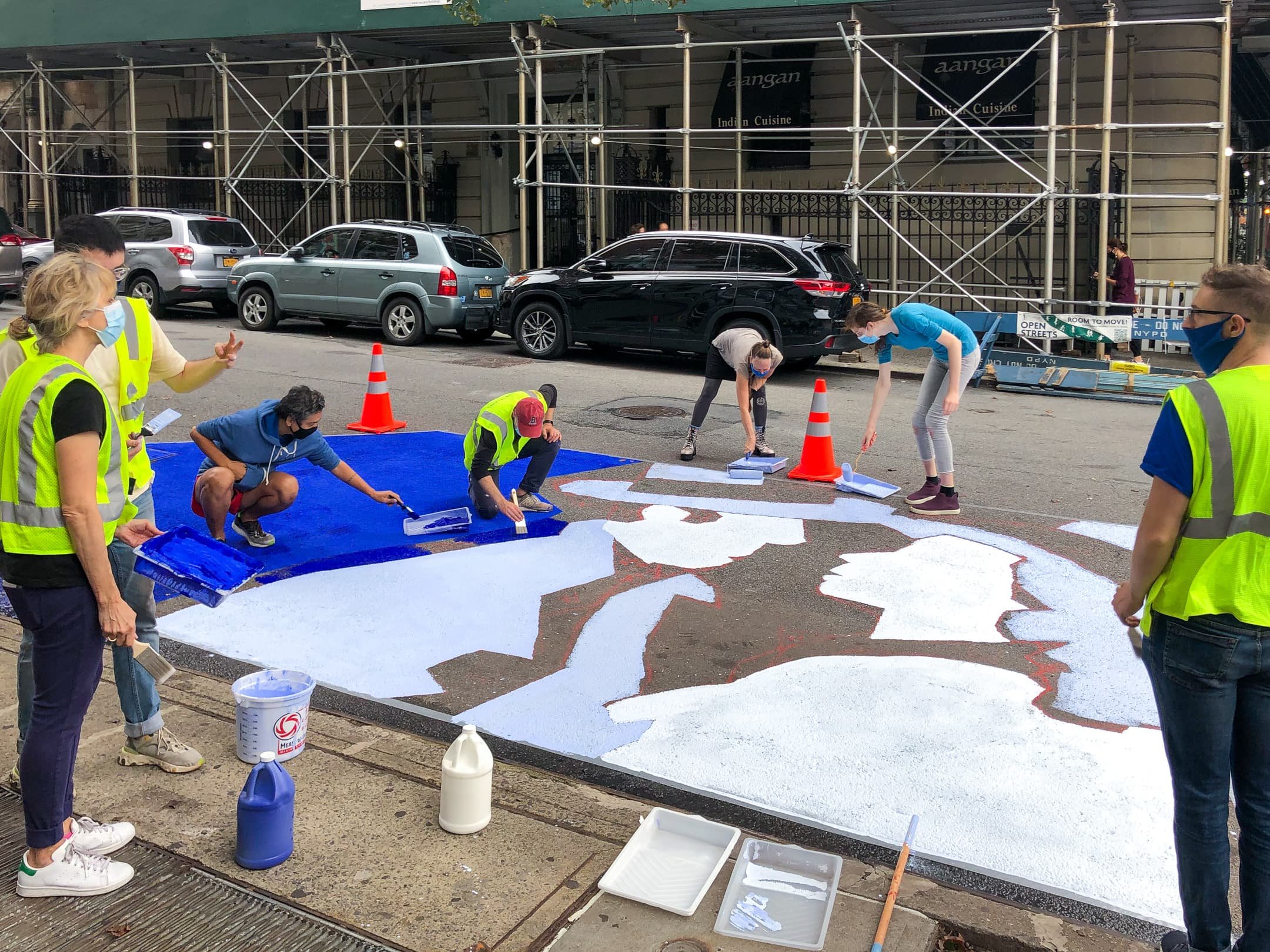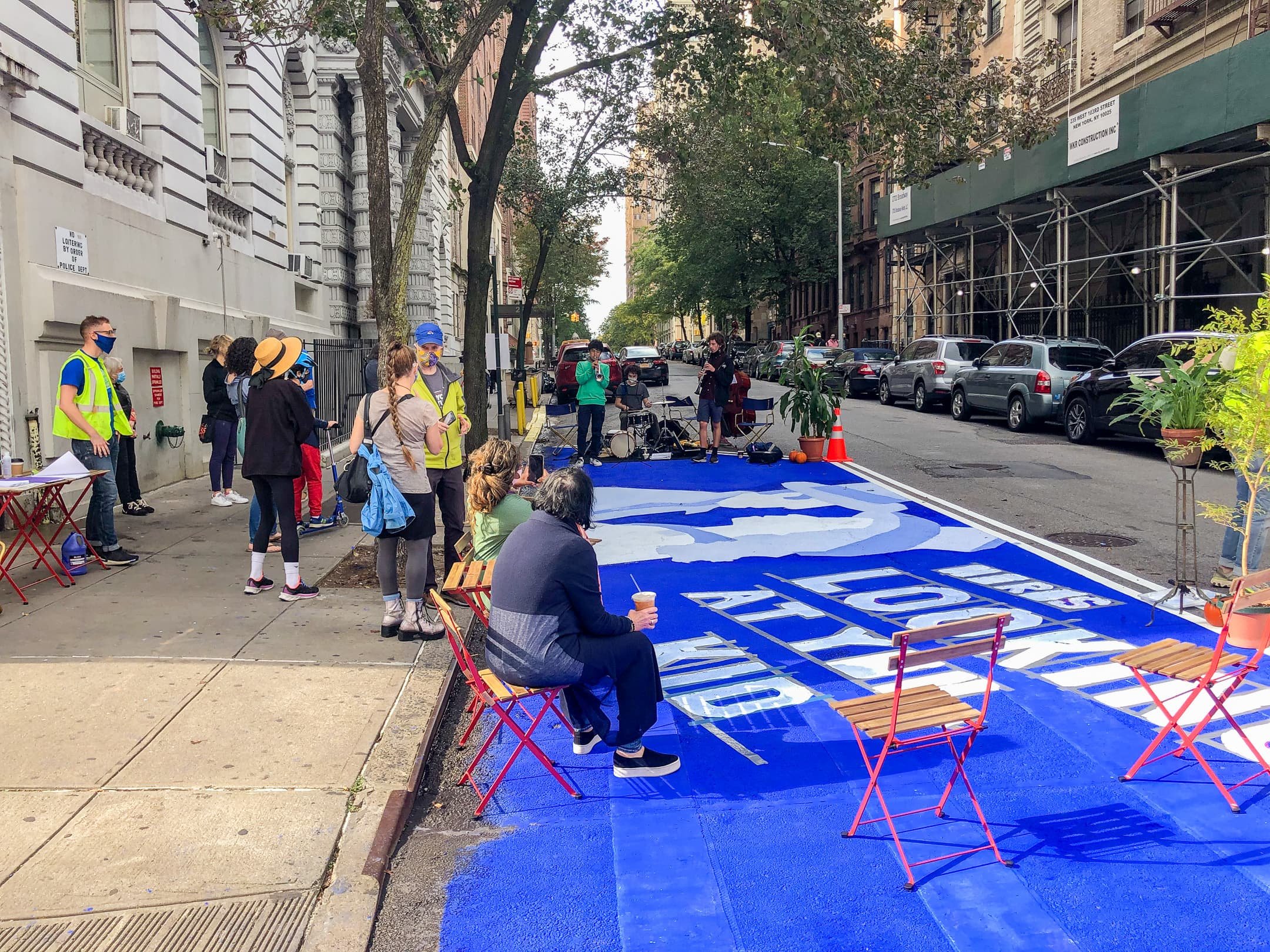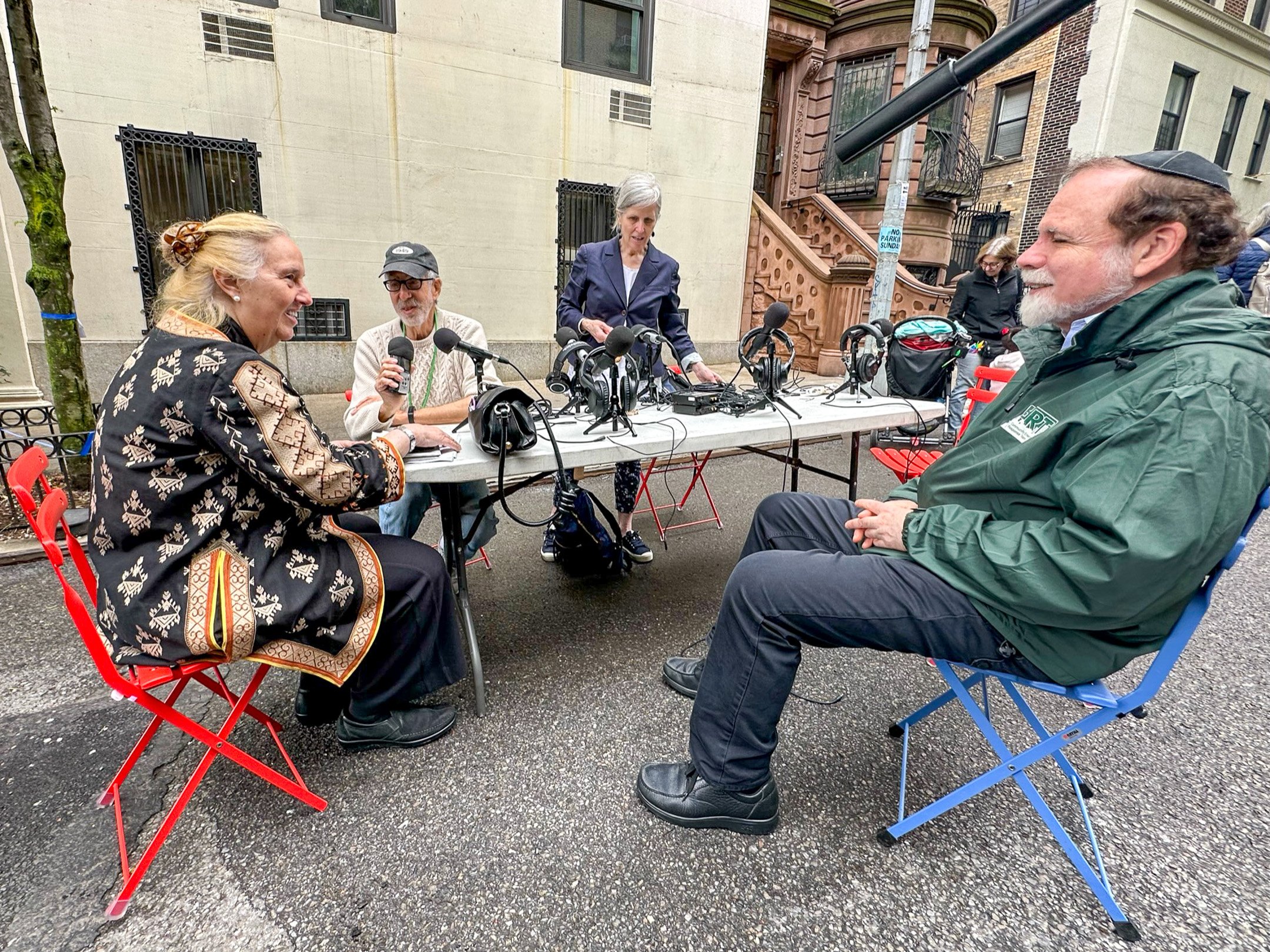After four years of community engagement, West 103rd Street gets pedestrian-centered makeover
This month, finishing touches were put on a Street Improvement Project years in the making. Using 5 mph signs, ample (and beautifully painted) curb extensions, planters, and safety stones, West 103rd Street between Amsterdam and West End Avenue in Manhattan has been transformed into a people-centered space. The product of years of collaboration between community members, advocacy groups and design leaders, the groundbreaking project employs many elements from DOT’s Street Design Manual and is a groundbreaking look at the future of neighborhood streets in New York City.
The product of years of community collaboration and engagement, the project is a groundbreaking look at the future of neighborhood streets in New York City. | Credit: Mike Lydon
A render showing the Street Improvement Project on West 103rd Street | Credit: Street Plans
The idea to create more space for people and connection in this neighborhood has been developing since a wildly successful Park(ing) Day event in 2009, when neighbors created a parklet in two parking spots outside the Marseilles Senior Housing at 103rd and Broadway. For one day only, seniors living in the building suddenly had access to safe outdoor space; a place where they could sit, socialize, and listen to jazz music played by Laguardia High School students. Though Park(ing) Day was only a one day event, it opened residents’ eyes to how paved spaces could play a more enriching role in their lives.
It was early 2019 when neighbors next began to organize around creating more opportunities for connection in streets and public spaces. At this time, Open Plans was gaining steam as a visionary advocacy organization, and we quickly saw the potential to pilot our brand of community-led change for people-centered streets; soon after, our friends at the planning and design firm Street Plans joined the project to help us visualize the design possibilities for the corridor.
We spent the next years engaging with neighbors, collecting data, brainstorming, and visualizing new possibilities. When Open Streets were introduced in 2020, the West 103rd site, running from Broadway to Riverside, became a hub for this engagement. The Open Street’s immense popularity served as both platform and proof of concept. We hosted joyous programs that engaged residents on public space issues while demonstrating the powerful potential of people-centered space. Painted street murals created curb extensions and parklets; an Earth Day event attracted hundreds of attendees with music, dance, chalk art, karate and games; Park(ing) Day events reclaimed curbside space for community use. At each event, the West 103rd Street Open Street Community Coalition heard from residents about what changes in their neighborhood would make them feel more safe, connected, and communal. Again and again we heard things like:
“This would be a much needed improvement to the neighborhood.”
“I wish there were fewer cars!”
“Do more of these everywhere.”
All this community engagement confirmed our assumptions that, just like in most areas throughout the city, the majority of residents near 103rd Street did not own cars and didn’t rely on cars for transportation. Yet the majority of local public space was dedicated to the movement and storage of those vehicles. With this community support confirmed, Street Plans drafted a vision to rebalance how one block of 103rd was designed and used. On this envisioned block, design elements allowed people to easily and safely walk in the street while coexisting with (slow) through-traffic. And as the movement for people-centered streets gained steam over the course of the pandemic, we realized the immense appetite for reclaiming paved spaces; our subsequent visualizations for 103rd Street grew more ambitious in size and scope.
We continued to meet with area residents and businesses to fine-tune our vision to the needs of the community. We met with organizations, neighbors, and business owners along the corridor to learn how they use the streets and sidewalks, and Open Plans shared more about how the proposed changes would provide tangible benefits. In June 2022, the plan was presented to Manhattan Community Board 7’s Transportation Committee and, in September, to the full board; the affirmative vote was nearly unanimous.
After months of careful work by DOT and expert mural painting by the community and Street Plans, the finished project is the first of its kind on the Upper West Side. We are sure it will serve as a model for other city blocks eager to prioritize people-first streets in their neighborhoods.
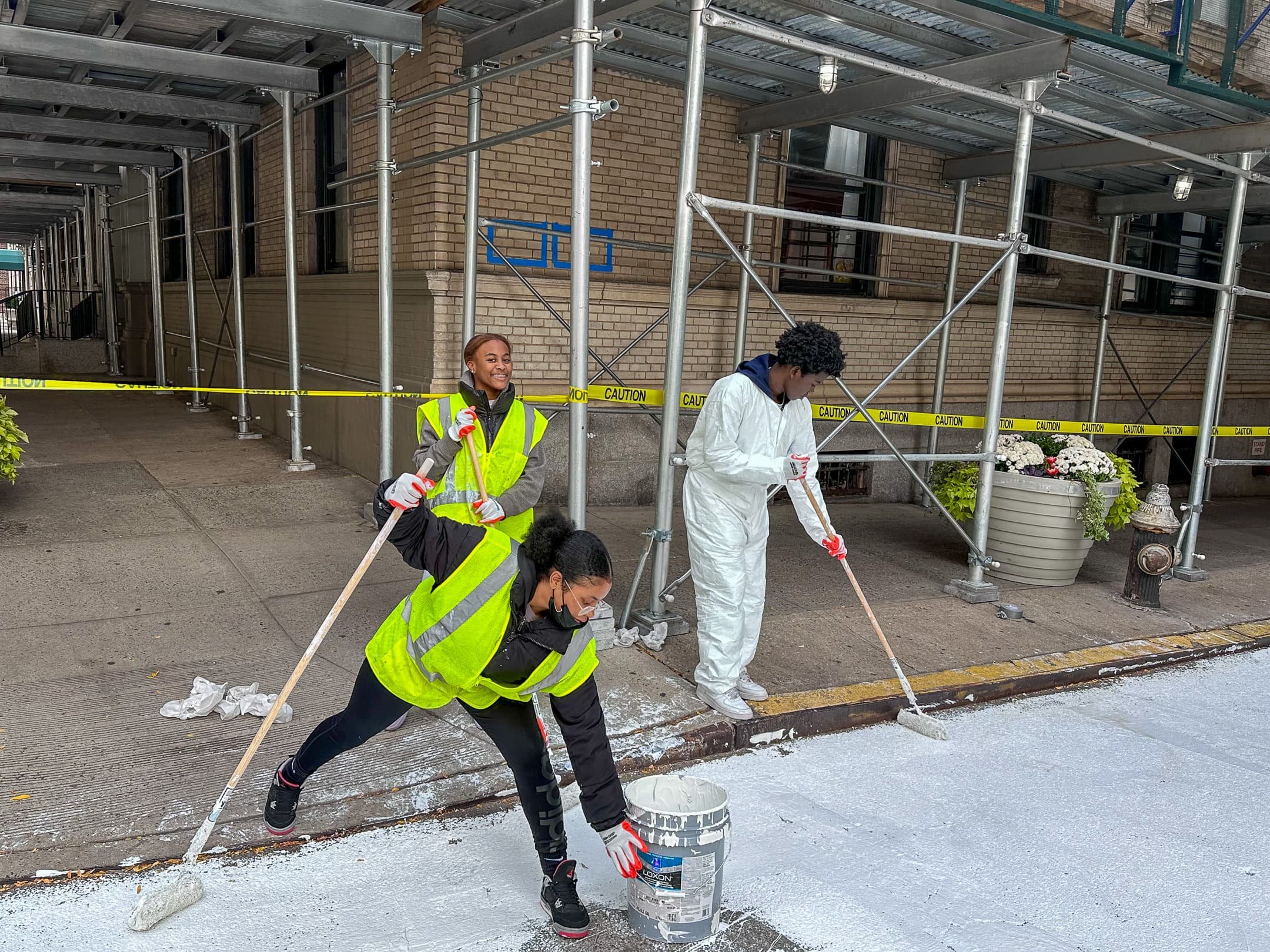
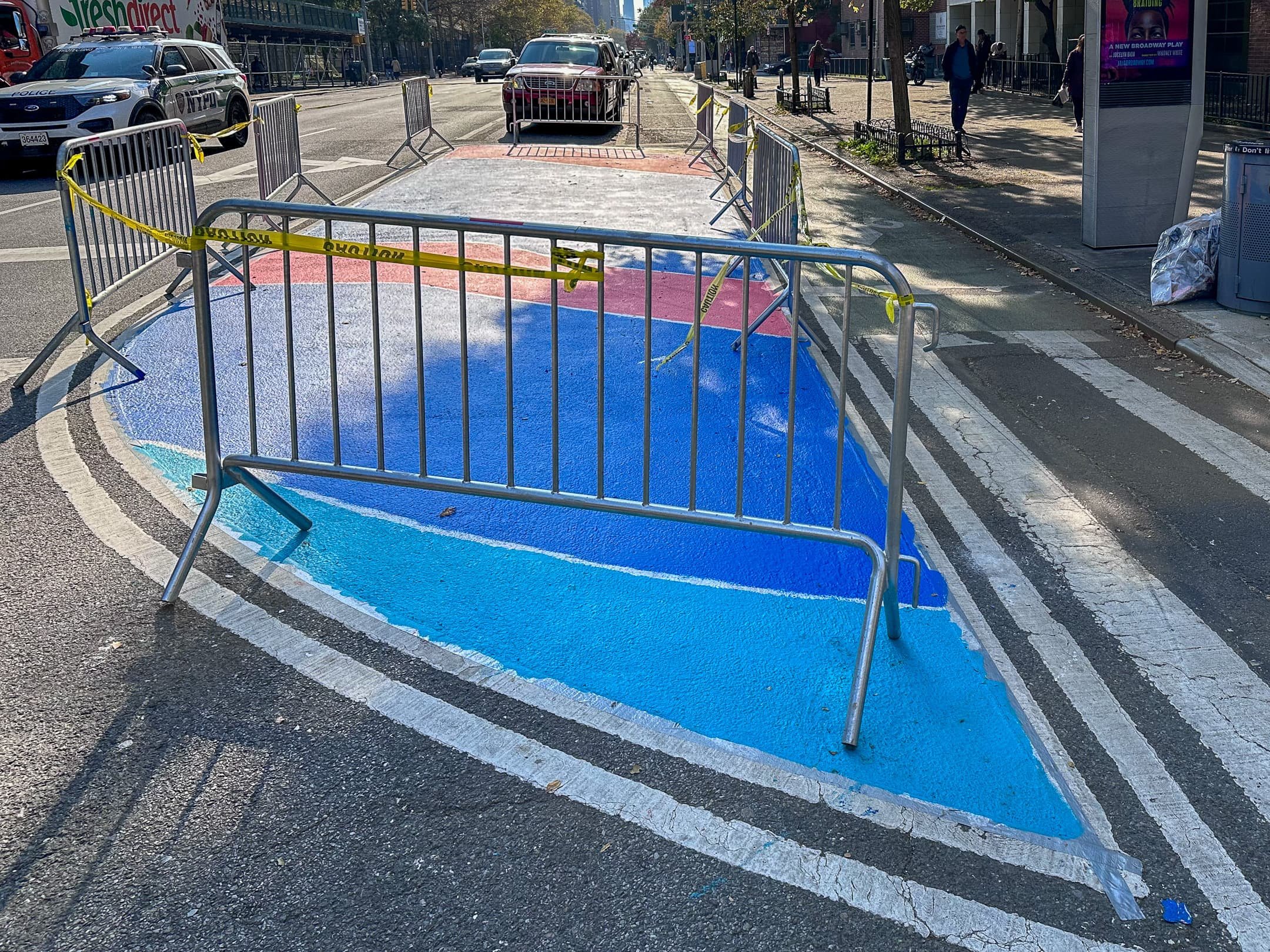

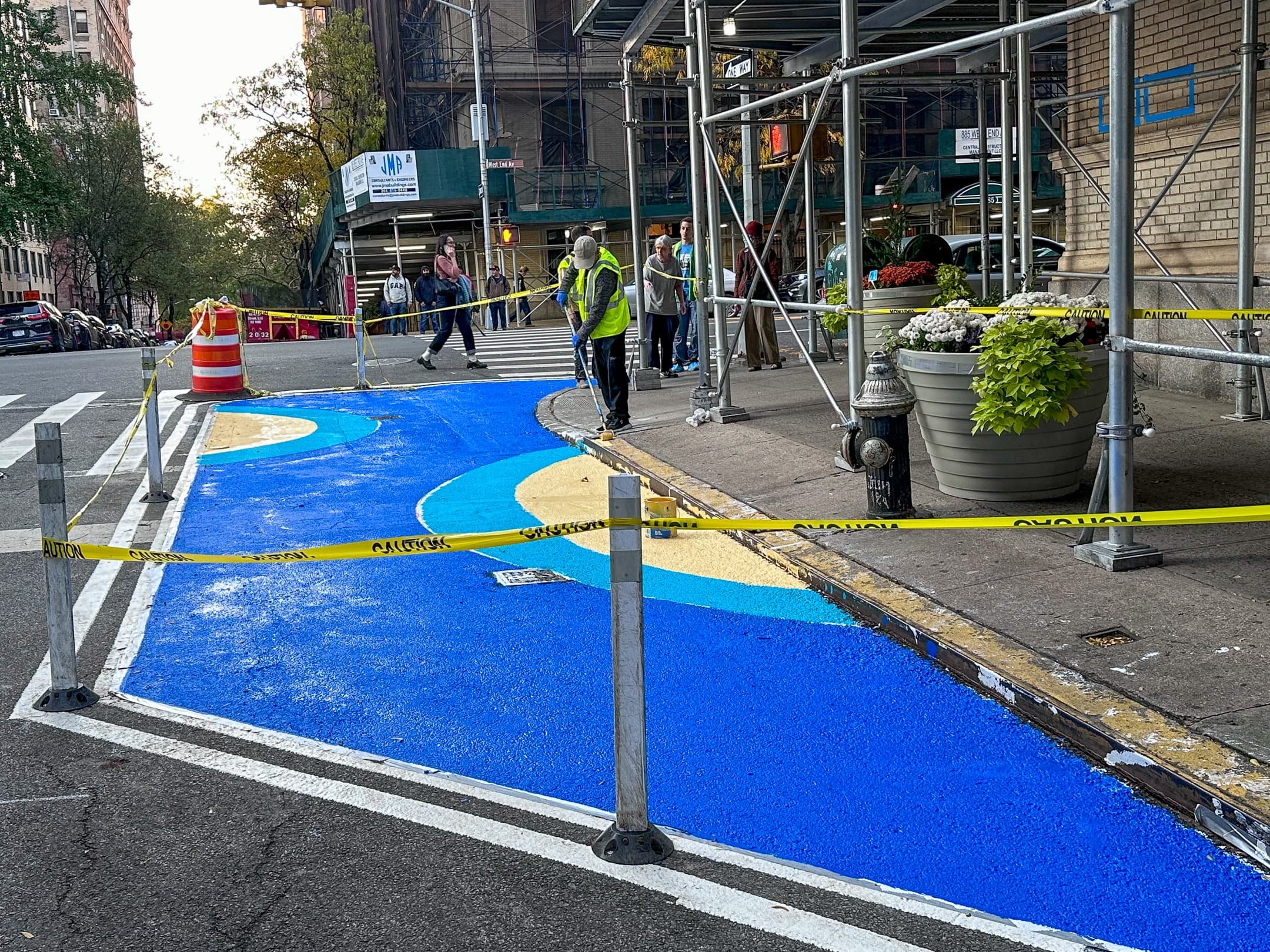
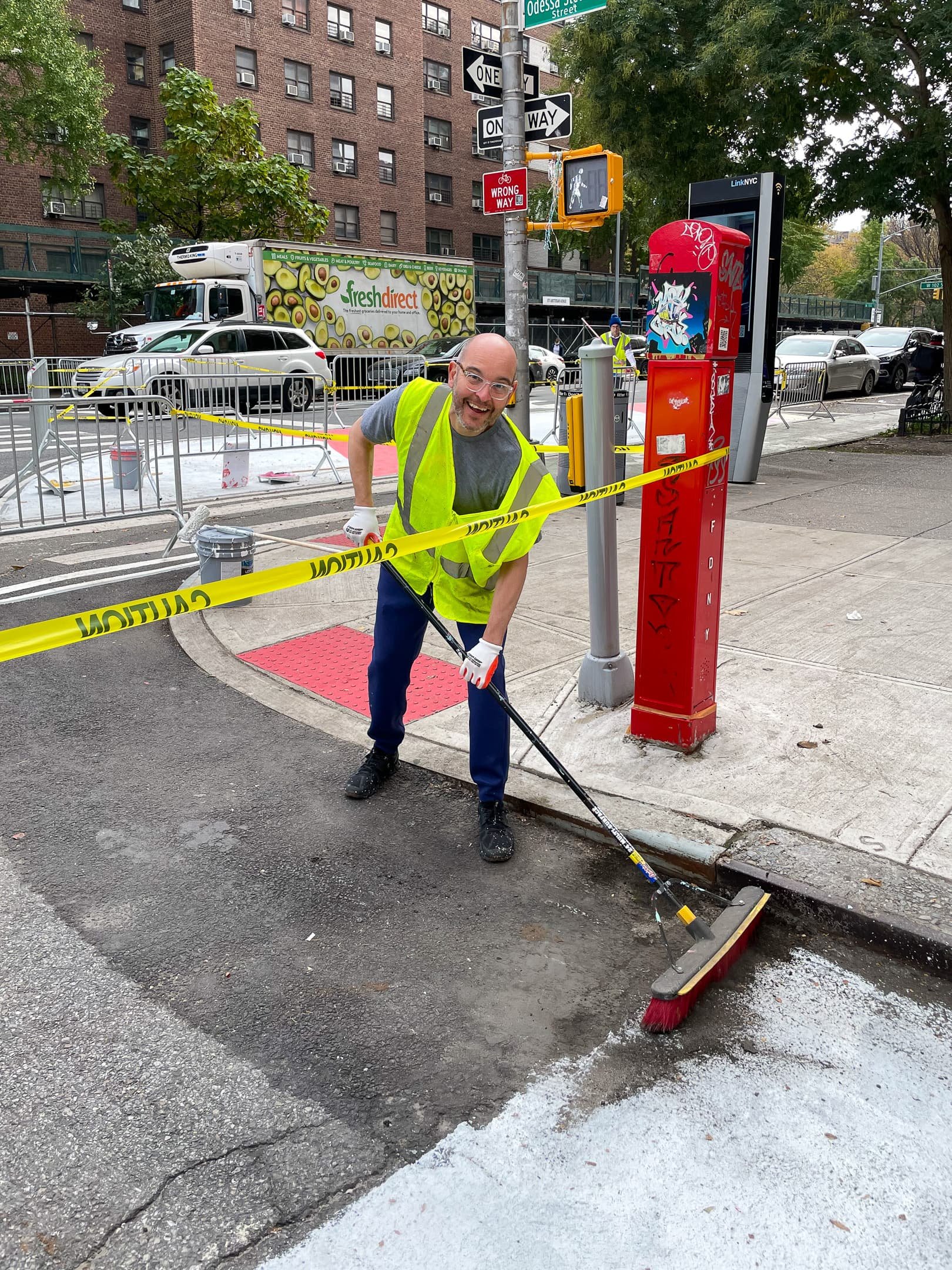

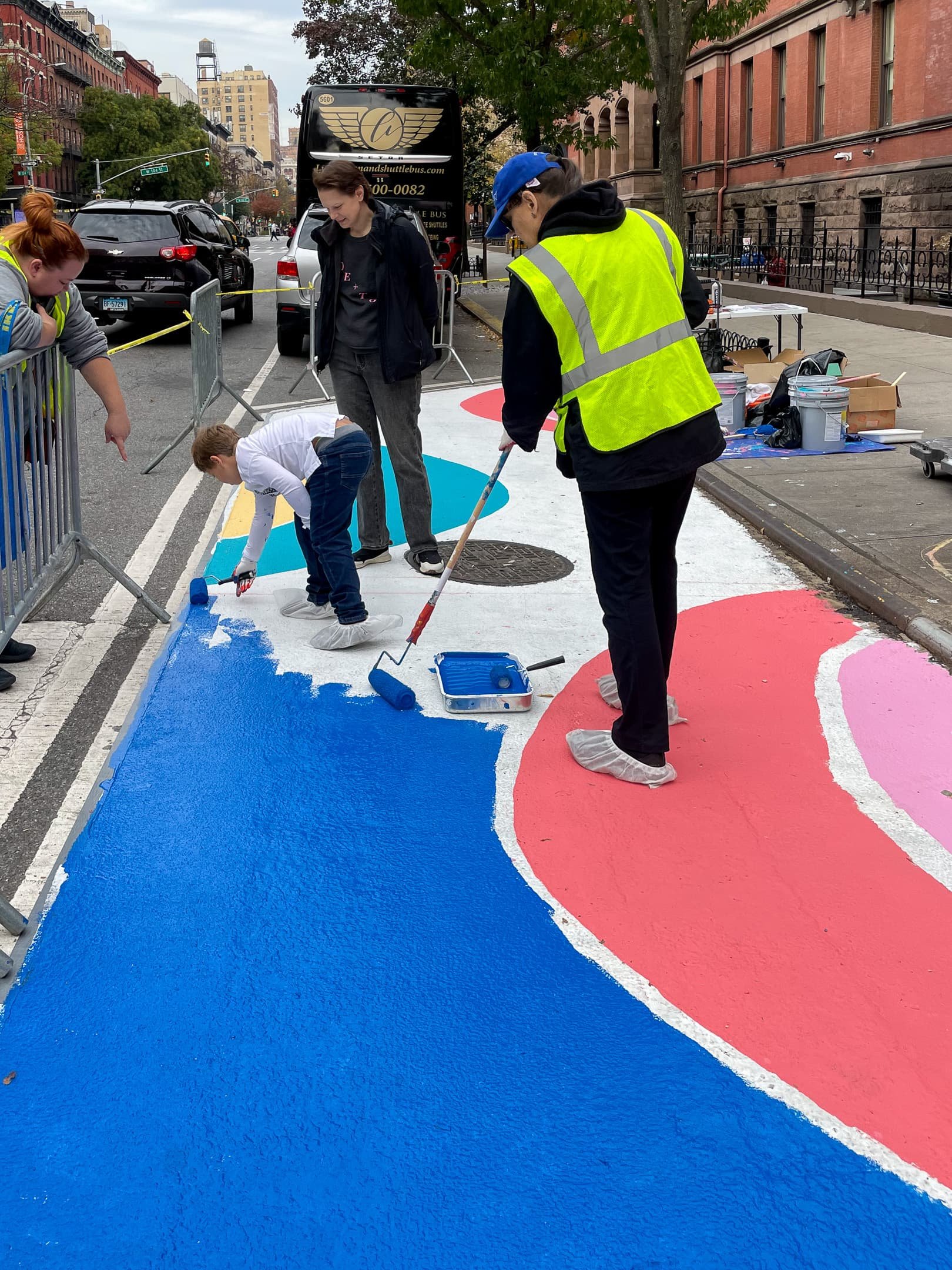
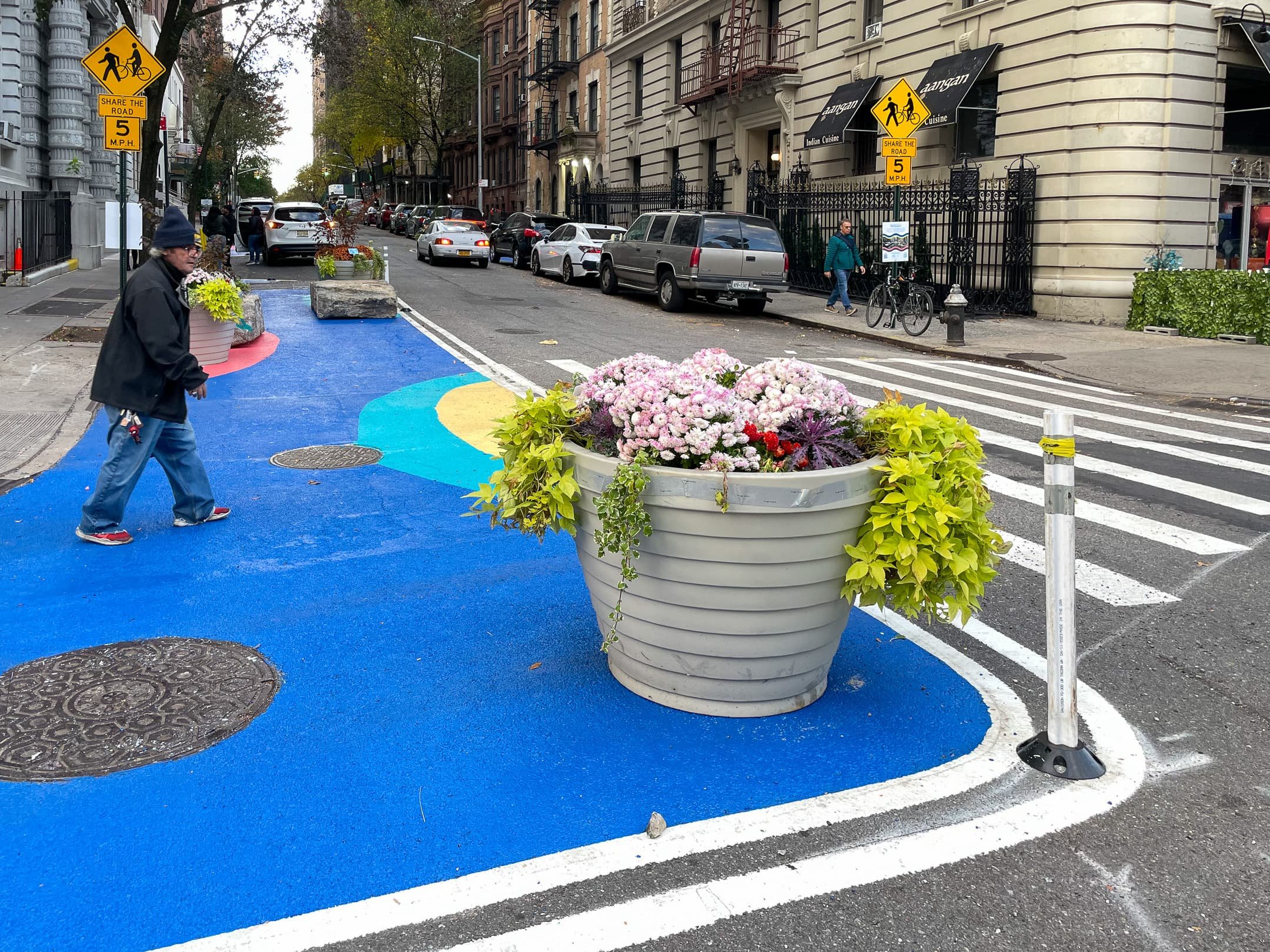
We want to thank the many groups and individuals who have engaged in this ongoing work including the 103rd Street Open Street Community Coalition members, area restaurants, Hosteling International NY, the West Side Federation for Senior and Supportive Housing, Purple Circle Early Childhood Education Center, condo associations, Street Plans and Douglass Housing tenant groups.




